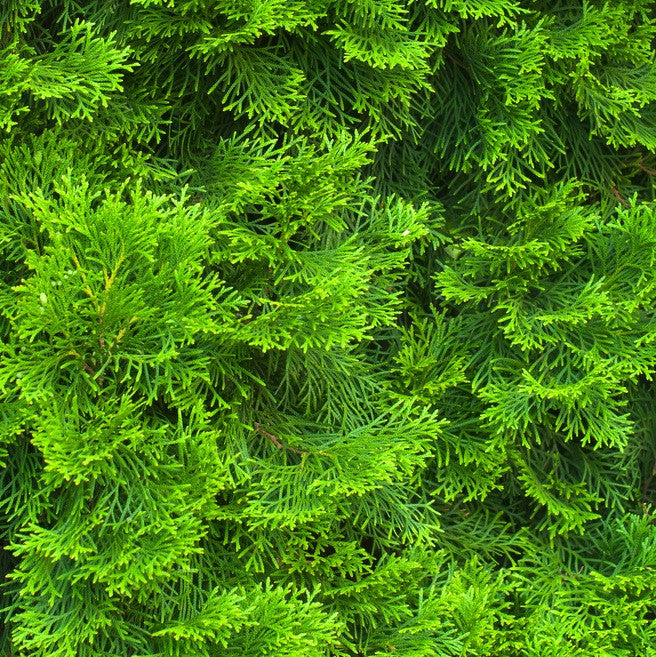TIMELESS Essential Oils
Blue Cypress
Couldn't load pickup availability
Pure Therapeutic Blue Cypress essential oil
Product Details
Botanical name : Callistris columellaris var. intratropica
Extraction method / Source : Steam distillation / leaves
Aroma : Woody, sweet
Note classification : Base Odor Intensity : 4
Key constituents : Guaiol, guaiazulene, beta-eudesmol, beta-eudesmol, alpha-eudesmol, gamma-eudesmol, beta-selinene, alpha-selinene, and many trace constituents
Plant description : Botanical family : Cupressaceae The Blue Cypress tree, also called Australian Blue Cypress, or Northern Cypress Pine, is an evergreen conifer native to Australia. It produces leaves which are dark green or grey-green scales, and both male and female cones. The trees can grow to over 90 feet in height. Blue Cypress forests benefit from frequent, mild fires to reduce crowding from juvenile trees.
Regions of Production : Australia
Growing Practices : Managed forests -- grown without the use of chemical fertilizers or pesticides.
History / Fun Facts : Blue Cypress was designated as the official fragrance of the 2000 Summer Olympic Games in Sydney, Australia. Historically, Australian aboriginals applied a tea made from blue cypress heartwood to the skin to help reduce abdominal discomfort, relieve musculoskeletal aches and pains, and heal cuts and skin sores. They also burned the wood to repel mosquitoes and other flying insects. The wood was used to make shafts for their spears. The aboriginal peoples routinely burned the forests to sustain the blue cypress trees. At one time, fire suppression and over harvesting of the trees for lumber threatened the Blue Cypress species. Now, the forests are managed with scheduled mild burns and replanting. The essential oil industry contributes to maintaining these forests.
Properties
Analgesic, antibacterial, anti-inflammatory, anti-neuralgic, antiseptic, antispasmodic, antiviral, immune stimulant, regenerative, repels insects, sedative, vulnerary Please refer to the Glossary for terms which may be new to you.
Uses / Benefits : Cuts, bruises and abrasions, swelling, burns, insect bites, dry skin, herpes sores, chicken pox, sprains and strains, arthritis and muscle pain, nerve pain, natural mosquito repellent, immune system support, fixative for natural perfume making
Fragrant influences: Grounding, balancing, calms an overactive mind, helps reduce anger, promotes acceptance
Safety
Use with caution during pregnancy and lactation, and for small children and the elderly.
Notice : This information is for educational purposes only. It has not been evaluated by the US Food and Drug Administration. It is not intended to diagnose, treat, cure or prevent any condition or disease and should not take the place of evaluation by a qualified health professional. Although we strive to provide information which is accurate and up to date, we cannot guarantee the accuracy or completeness of this information.
Precautions : Pure essential oils are highly concentrated plant extracts. Do not use them undiluted, or in the eyes or mucus membranes. If applying an essential oil to the skin, always dilute it with a proper carrier oil and test on a small patch of skin before applying to a large area. Do not take them internally except under the direction of a qualified professional trained in Aromatherapy. Always familiarize yourself with the safety, contraindications and proper preparation of each essential oil before use. Note that when using essential oils for children and the elderly, very low concentrations should be used. Keep all essential oils away from children and pets.
TIMELESS Essential Oils guarantees the purity and quality of all our therapeutic oils. Current Certificate of Analysis is available upon request. All essential oils are best stored in an airtight container away from heat and light.
References
International Fragrance Research Association, http://www.ifraorg.org/en-us/standards (January 5, 2016)
The Gymnosperm Database, http://www.conifers.com (Novenber 15, 2015)
Tourles, Stephanie L., Hands On Healing Remedies, 2012. Storey Publishing, North Adams, MA.
United States Food and Drug Administration, HHS, 182.1 Substances That Are Generally Recognized as Safe, 182.20 Essential oils, Oleoresins (solvent-free), and natural extractives (including distillates), http://www.gpo.gov/fdsys/CFR-2012-title21-vol3-sec182 (January 28, 2016)
Williams, David G., The Chemistry of Essential Oils, 1996. Micelle Press, Dorcet, England
Worwood, Valerie Ann, The Complete Book of Essential Oils & Aromatherapy, 1991. New World Library, Novato, California


